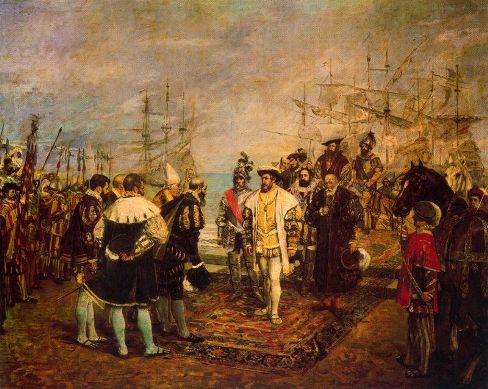Today is another anniversary of the Battle of Pavia. It was fought on the morning of the 24th of February 1525 near the Imperial-controlled city of Pavia in Lombardy, Italy. The French kingdom of King François I of France was unfortunately vanquished by the Habsburg empire of Emperor Charles V, who also ruled Spain, Austria, the Low Countries, the former kingdom of Naples, and Sicily. It was the decisive confrontation of the Italian War of 1521-1526.
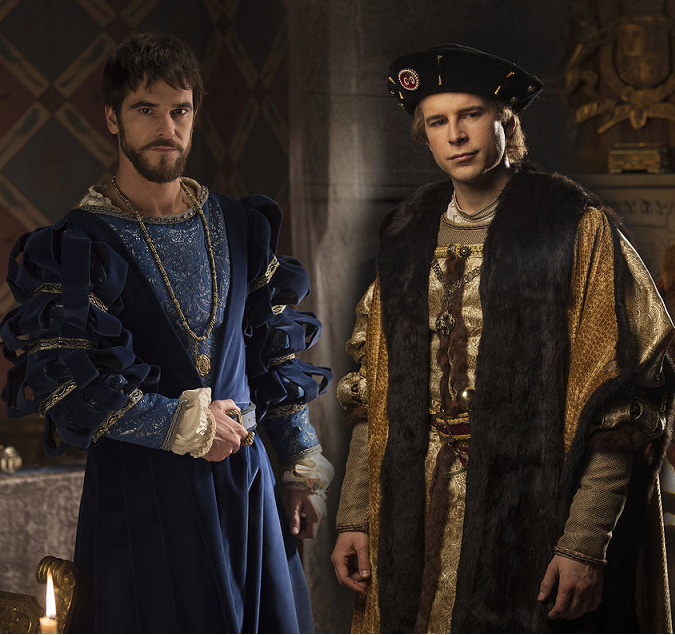
The Italian Wars of the 1498-1559 (these conflicts are also known as the Habsburg-Valois wars) had several reasons. They include: the diverse political structure of Italy, which consisted of duchies, city-states, and republics; the significant impact of intellectual and social events of the Renaissance era on all spheres of life; and the massive territorial expansion of the Holy Roman Empire and the House of Habsburg in Europe. Moreover, King François had an ill-fated dream of recovering the Milanese heritage of his great-grandmother Valentina Visconti (she was daughter of Gian Galeazzo, 1st Duke of Milan from the House of Visconti). France competed with Spain for control in Italy, and the apogee of the confrontation was destined to happen at Pavia.
At the beginning of the 1520s, Lombardy was considered a vassal to France. In 1516, after the French victory at the Battle of Marignano, Odet of Foix, Viscount de Lautrec, had been made governor of the Milanese duchy. After the French had been driven from Milan in late 1521, the joint French and Venetian forces under Lautrec were crushed at the Battle of Bicocca of 1522 (Bicocca is a district of Milan) by the Imperial and papal armies under the general command of Prospero Colonna (an Italian condottiero). King François I tried to regain the lost territories and sent his troops there, but the French did not win the Battle of the Sesia of 1524 (fought near the Sesia River situated in north-western Italy), so they returned to France without success.
Soon the Imperial-Spanish troops invaded Provence under Fernando d’Avalos, Marquis of Pescara, and Charles III, Duke de Bourbon. The second man was the treacherous Constable de Bourbon who he betrayed François I by allying himself with Emperor Charles V with the aim to partition France and perhaps dethrone the Valois ruler. However, the invasion failed because the Spaniards lost too much time during the Siege of Marseilles and eventually had to retreat.
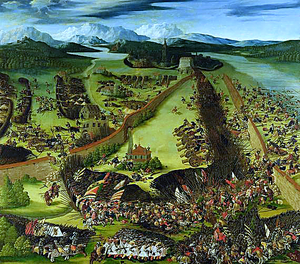
In October 1524, King François and the main French army began their march to Italy. They crossed the Alps and advanced on Milan. Immediately, the Imperials garrisons deserted Milan and withdrew to Lodi in the city’s vicinity. François underestimated and danger and rejoiced that he had re-captured Milan without difficulties; he appointed the governor and then advanced on Pavia, where a sizable Imperial garrison of about nine thousand soldiers was stationed.
The decisive battle did not take place straight away. Instead, local skirmishes and artillery bombardments followed. Once the French attempted a fierce assault on Pavia through two of the breaches in the city walls, but they were was beaten back. The situation was complicated by the rainy weather and the lack of gunpowder. François decided to wait: his strategy was that the defenders of the city would starve and would have to surrender. During the next several months, the monarch signed a secret agreement with Pope Clement VII, who pledged not to aid Charles in exchange for France’s assistance with the conquest of Naples.
In the evening of the 23rd of February 1525, the Imperial armies, led by Charles de Lannoy, marched north from their camp, located outside the city east wall. The enemy acted surreptitiously, and their artillery started bombarding the French siege lines. The battle itself continued in the Visconti Park of Mirabello di Pavia, outside the city walls, and it soon transformed into chaos, with different sources giving different orders of events. François left his infantry unsupported, and that he himself led a series of foolhardy cavalry charges, with the possible goal to capturing the traitor Bourbon, but it was stopped by German and Spanish pikemen and pummeled by the fire of harquebusiers.

The outcome was catastrophic for France: the French were utterly defeated and suffered heavy causalities, while the King of France was taken prisoner, which was one of the most outrageous events of the time. History knows other famous captive kings. King Richard I of England, known as the Lionheart, had been captured before Christmas 1192 near Vienna by Duke Leopold of Austria, on the way from the Holy Land. King Louis IX of France, or Saint Louis, found himself in captivity after the defeat of his crusading army in Egypt in April 1250, during Louis’ first Crusade.
As for the Battle of Pavia, many French nobles and generals, including Anne de Montmorency (the king’s close friend and later Grand Master of France), were taken prisoner as well. Many French perished in battle, including Louis II de la Trémoille and Richard de la Pole. A third of the army escaped under the command of Charles IV, Duke d’Alençon and the monarch’s cousin, whose rearguard did not engage. At the time, Alençon was not only the king’s cousin, but also his brother-in-law as he was married to Marguerite d’Angoulême, François’ sister, at the time; for some reason, the duke was later considered somewhat responsible for the defeat.
In the book “The Battle of Pavia 1525”, Stephen Lark writes:
“François had lost no fewer than five of his senior co-commanders that day but Lannoy made a special effort to take the King alive. In a strange echo of Bosworth, his horse was killed under him, apparently by a mercenary named Cesare Hercolani. François duly survived and de Vasto’s men escorted him to imprisonment at Pizzighettone, although the identity of the particular enemy who captured him is disputed and Charles could not attribute responsibility later.
The battle was over within about three hours and French casualties exceeded Imperial ones by thirty to one, although this estimate includes their many prisoners, among whom de la Marck, St. Pol, Montmorency, d’Assier, von Diesbach and Tiercelin were also prominent.”
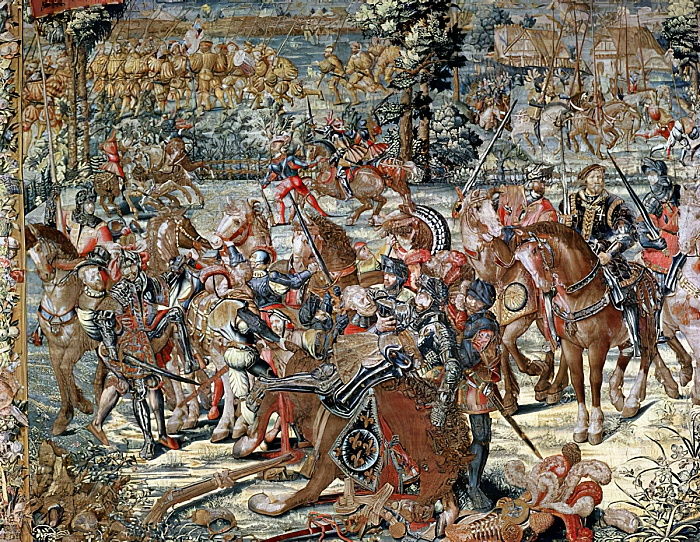
After becoming a prisoner, the Valois ruler was transported to the fortress of Pizzighettone. This place was a walled city in the province of Cremona, in Lombardy. It is thought that the king wrote his infamous letter to his beloved mother, Louise de Savoy (she acted as his regent in the absence of her son), while being jailed in Pizzighettone. He wrote:
“To inform you of how the rest of my ill-fortune is proceeding, all is lost to me save honour and life, which is safe…”
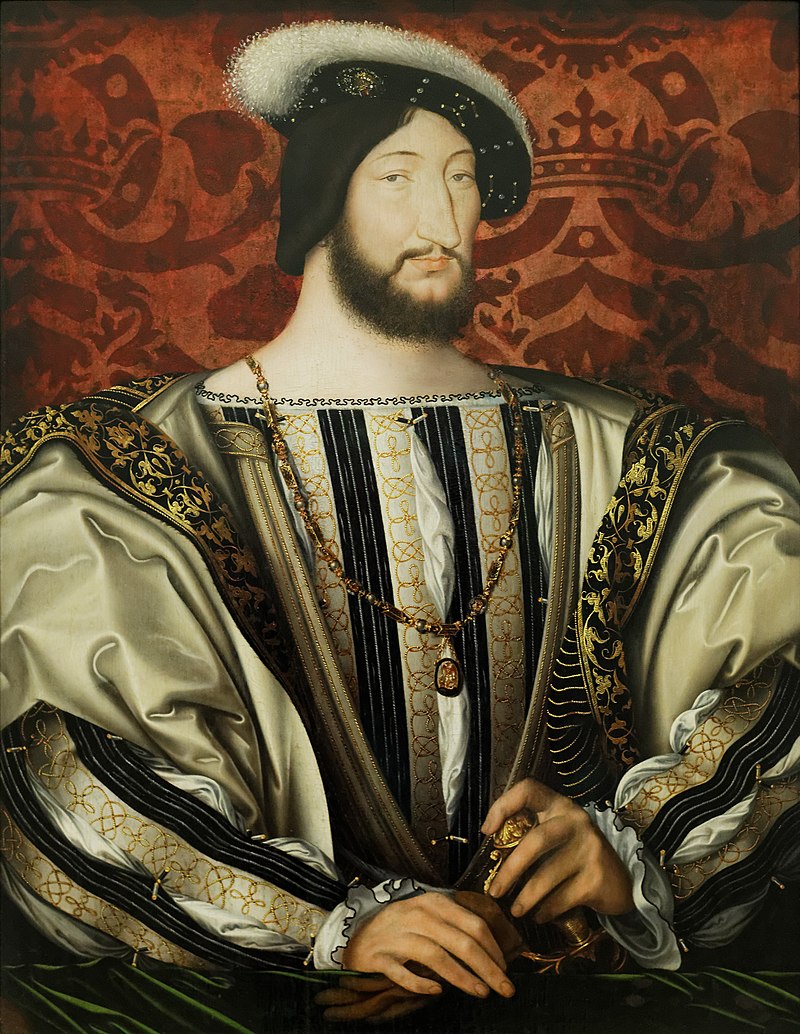
Later, the unfortunate monarch was taken to Barcelona and then to Madrid, where he had to deal with Spanish “extreme hospitality.” Instead of treating his prisoner with the courtesy and respect fitting François’ royal station, Charles V fed his rival with promises about his liberation while actually seeking to get an astronomic ransom from his enemy and to compel him to make other serious concessions. François was incarcerated in an old and cold castle, and, after months of depression and waiting, he contacted a dangerous fever. Frightened that François might have died, Charles paid a visit to the sick king and put on a show of respect and affection, although he lied through his teeth. The emperor even lied that François would be released soon.
However, King François spent about a year in captivity. After his recovery when his brave sister, Marguerite, nursed him to life (she rushed to Spain to help her brother), he was still closely watched, but his living conditions improved. In January 1526, when the Treaty of Madrid was signed, he was finally released in exchange for taking his two eldest sons into the Spanish custody. Grossly insulted by the emperor, the King of France would never forget and forgive this: his hatred and disgust, which he felt towards the Spaniards, would not fade away until his dying day. These feelings would be strengthened by his failures to defeat Charles in major battles for dominance in Italy, and to avenge France’s humiliation after the disastrous Battle of Pavia.
All images are in the public domain.
Text © 2021 Olivia Longueville

